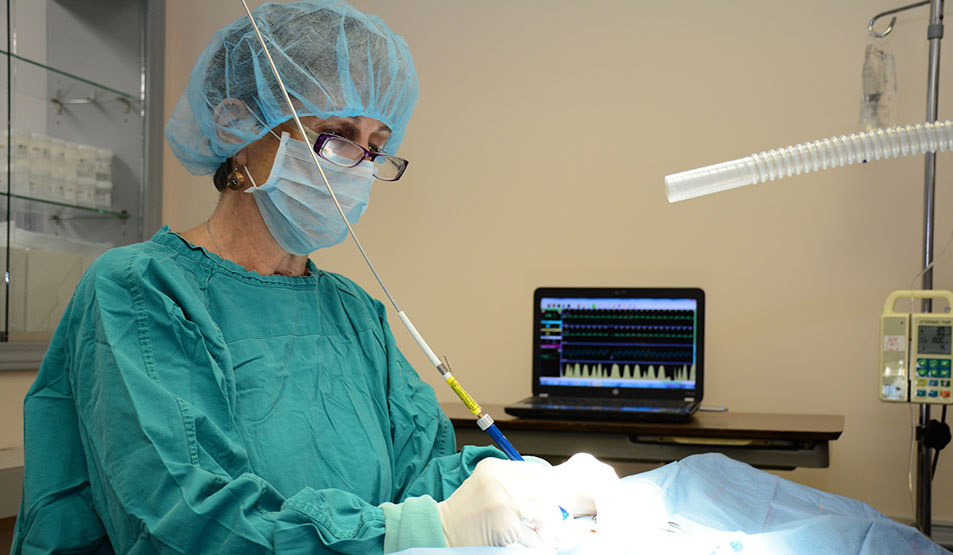
Laser Surgery for Pets
What are the benefits of Laser surgery?
- Less Bleeding: As it cuts, the laser beam seals small blood vessels. This results in a drastic reduction in bleeding and enables surgical procedures that are not practical with conventional scapel cutting.
- Less Pain: the CO2 laser beam seals nerve endings and lymphatics, resulting in less swelling and pain. The patient experiences a far more comfortable post-operative recovery.
- Reduced risk of infection: This is one of the unique features of the CO2 laser beam. It efficiently kills bacteria in its path, producing a sterilizing effect.
- Quicker Recovery Time: Reduced risk of infection, less bleeding, less pain and less swelling often make recovery times faster.
What Is Laser Surgery and Why Do We Like it?:
In laser surgery, a highly focused laser bean can efficiently cut or ablate (either vaporize or chip away) the living tissue. When we use laser to make an incision, the surgery site doesn’t bleed and it creates a pain free incision site because it seals the small nerve endings. As it seals (welds capillaries, small blood vessels, lymphatics and nerve endings) it becomes significantly more beneficial to both patients and surgeons.
What is a Veterinary Laser?
LASER stands for Light Amplification by Stimulated Emission of Radiation. A laser is an opto-electronic device that produces highly concentrated light rays. Laser power may range from milliWatts (in CD drives and laser pointers) to dozens of Watts (industrial and medical applications) and over trillions of Watts (pulsed lasers in scientific and military applications).
Laser Surgery Procedures especially for Senor Pets
Does your pet have a superficial tumor or a “Lick Ulcer” on their leg that won’t go away? These are perfect for the cutting laser. We can give your pet a mild sedative and remove that mass easily and very often it doesn’t even require sutures. Because the Laser cuts the nerves and seals the blood vessels, there is no post operative pain, no bleeding and your pet will be comfortable while it heals. We have used this extensively on senior pets without general anesthesia. Many pets have dozens of small papillomas or sebaceous cysts and they can all be removed without general anesthesia.





